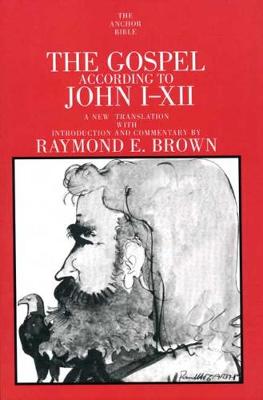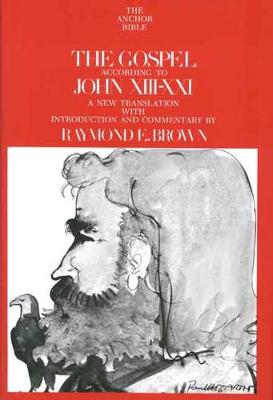Anchor Bible Commentary (YUP)
3 total works
In the first volume of Raymond E. Brown's magisterial three-volume commentary on the Gospel According to John, all of the major Johannine questions-of authorship, composition, dating, the relationship of John to the Synoptics (Mark, Matthew, and Luke)-are discussed. The important theories of modern biblical scholarship concerning John are weighed against the evidence given in the text and against prevailing biblical research. In sum, what is attempted is a synthesis of the major scholarly insights that bear on the Fourth Gospel.
The translation-as Father Brown states at the outset-strives not for any formal beauty but rather for an accurate and contemporary version: "the simple, everyday Greek of the Gospel has been rendered into the ordinary American English of today." The result is a translation that will strike the reader with uncommon immediacy.
Father Brown also analyzes, in the appendixes, the meaning, use, and frequency of certain key words and phrases that occur in John, and examines the differences between the Johannine and Synoptic treatments of the miracle stories.
The chapters of the Gospel translated here in Volume 29 (1-12) comprise the Prologue, which opens with the famous "In the beginning was the Word," and the Book of Signs, an account of the miracles of Jesus and of his ministry.
This volume concludes Raymond E. Brown's commentary on the Gospel of John. Continuing his study begun in Anchor Bible Volume 29, the author translates the original Greek text into today's English. which allows all readers to make sense of the Gospel. Father Brown's notes and comments sort out the major issues surrounding the writings of John -- questions of authorship, composition, date, and John's relation to the Synoptic Gospels (Matthew, Mark, and Luke). He analyzes and presents the scholarly debates in a form the interested layperson can appreciate.
John chapters 13-21 comprise the Book of Glory (describing the Last Supper, the Passion, and the appearances of the Risen Jesus) and the epilogue to the Gospel. This commentary includes a special appendix on the Paraclete, in which Brown examines in detail the role of the Holy Spirit. Whether discussing John's version of miracle stories found in the other Gospels, explaining the meaning of obscure Greek words, or showing the relevance of Jesus' words and deeds, Father Brown speaks to scholars and laypeople alike.
With this study-companion to the masterful two-volume The Gospel According to John-Raymond E. Brown completed his trilogy on the Johannine corpus. Meticulous in detail, exhaustive in analysis, persuasive in argument, it examines controversies that have long troubled both biblical scholars and lay readers. Questions of authorship, composition, and dating, as well as the debate over source theories, are discussed at length; but these are kept subordinate to the overall question of meaning.
What gives this commentary special interest and excitement is the bold, imaginative reconstruction of the setting of the Johannine work-in particular of the "opposition figures," who are only dimly sketched in the Epistles-so that we see clearly that the author is writing to his flock both about the dangers and difficulties confronting them, and about the eternal life that is theirs by the gift of God. In this way, the Epistles of John become intelligible as broadsides in a critical engagement between the forces of light and darkness.
In addition to his superb textual analysis of the letters, Raymond Brown has brought to life the community in which these works were formed and shaped. We are forcefully reminded that the Gospel and the Epistles were addressed to very real people living in the first century a.d., people with religious problems not unlike our own. In all respects, The Epistles of John stands out as a model of biblical scholarship and study.


